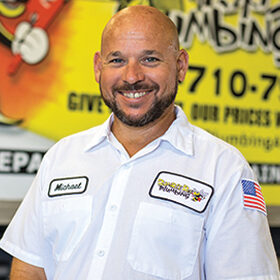When you’re going about your busy day, the last thing you need is to run across a clogged drain. The good news is you may be able to troubleshoot the clog yourself without too much trouble. Consider what might have caused the drain to clog in the first place. Then, follow our expert tips to unclog it.
Troubleshooting a Clogged Shower Drain
The bathtub and shower drain usually clog as a result of hair and soap scum buildup. The drain may be slow at first, which is when you should take action. If you wait until the water pools around your ankles without draining at all, removing the blockage could be much more difficult.
- Use commercial drain cleaning chemicals. Remember, this is only a temporary fix and could damage your plumbing if repeated too often.
- Remove the internal stopper, if your shower has one, and clean it to remove hair and other gunk.
- Feed an auger into the drain to reach clogs located further down the pipe.
- Plunge the drain with a plunger. For sanitation reasons, don’t use the toilet plunger.
Call Us Today!
Troubleshooting a Clogged Bathroom Sink
Most bathroom sinks become clogged when too much foreign debris accumulates in the pipes. Dirt, dust, skin flakes, soap scum, gobs of toothpaste, and especially hair are common culprits. You can prevent future clogs by putting a mesh strainer over the drain and doing your best to keep hair out of the sink.
- Remove and clean the drain stopper. Most clogs form here and are quite easy, though messy, to fix.
- Straighten a wire coat hanger and make a small hook at the end. Probe around inside the drain and see what gunk you can pull out.
- Use an auger, also known as a plumbing snake, to fish out a clog that’s wedged further down the drain.
- Plunge the drain with a sink plunger.
- Remove the elbow joint from beneath the sink and clean out the P-trap.
It might be time to call a professional. Fixing clogged sinks in Glendale is one of our specialties.
Troubleshooting a Clogged Toilet
A clogged toilet is a nasty business. Blockages commonly occur when too much toilet paper is used in conjunction with solid human waste. You also run the risk of a clog if you flush anything other than toilet paper or waste, such as cotton swabs, feminine hygiene products, and baby wipes.
- Plunge the toilet. Use forceful thrusting motions to shoot jets of water into the pipe.
- Use a drain auger to reach two to five feet down the drainpipe and break up clogs or retrieve solid objects that are blocking the drain.
- NOTE: Never use chemical drain cleaner in the toilet.
Troubleshooting a Clogged Kitchen Sink
This hardworking drain can become clogged with cooking grease and un-dissolved food particles, such as rice and noodles that expand in water. The result is a stubborn, goopy clog.
- Pour a full pot or kettle of boiling water into the sink to help soften solidified grease and send it on its way down the pipe.
- Use a sink plunger. If you have a double sink, cover the drain in the second basin with a wet cloth to help create pressure within the pipe.
- Clean out the P-trap, the curved portion of the pipe below the kitchen sink.
- With the P-trap removed, insert a plumbing auger further down the drain to clear any blockages located there.
For expert help removing the toughest clogs, please call Bumble Bee Plumbing at 602-710-7981.
Ask us about our preventative drain cleaning services in Glendale and avoid the hassle of dealing with severe clogs and drain repairs!

